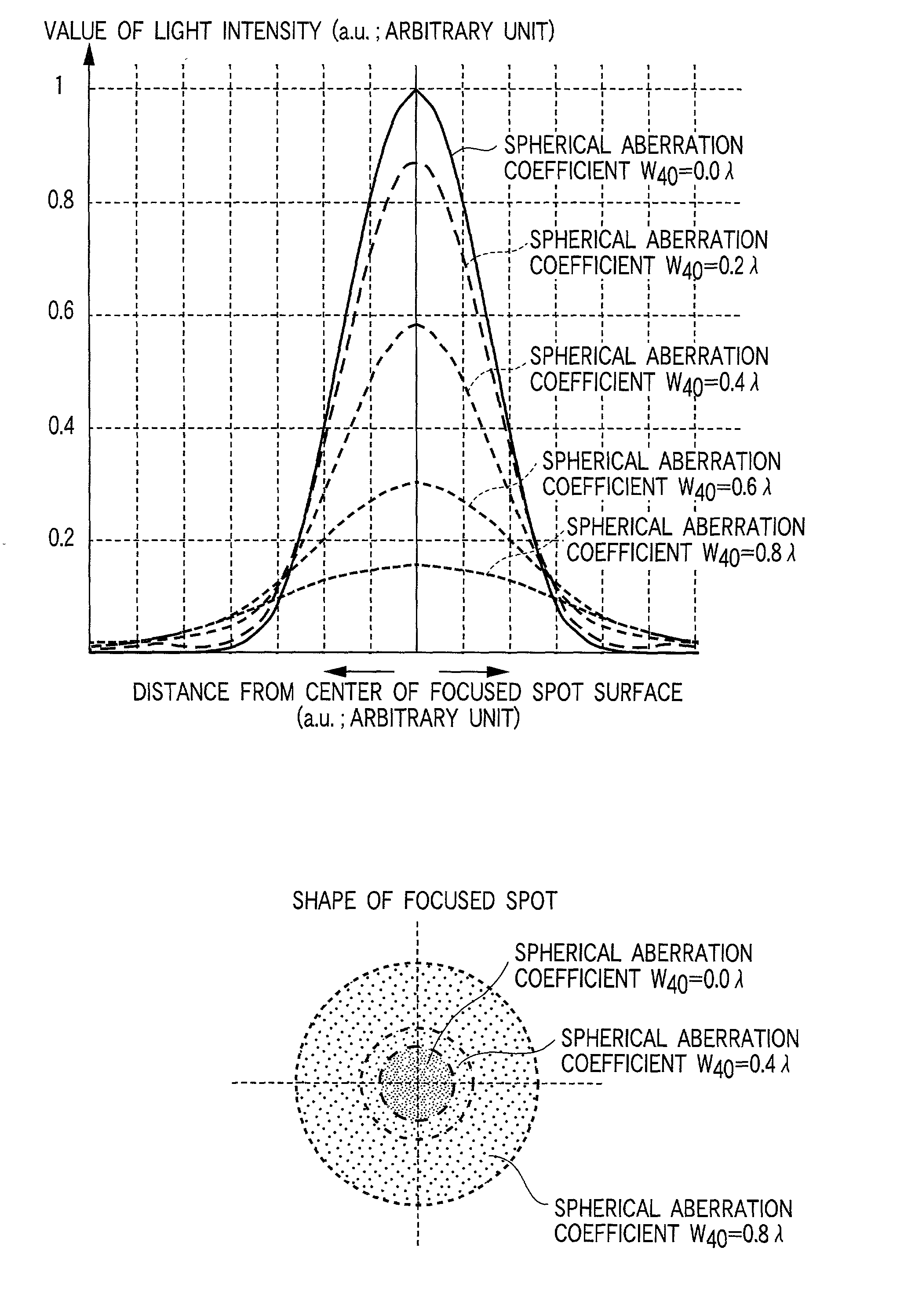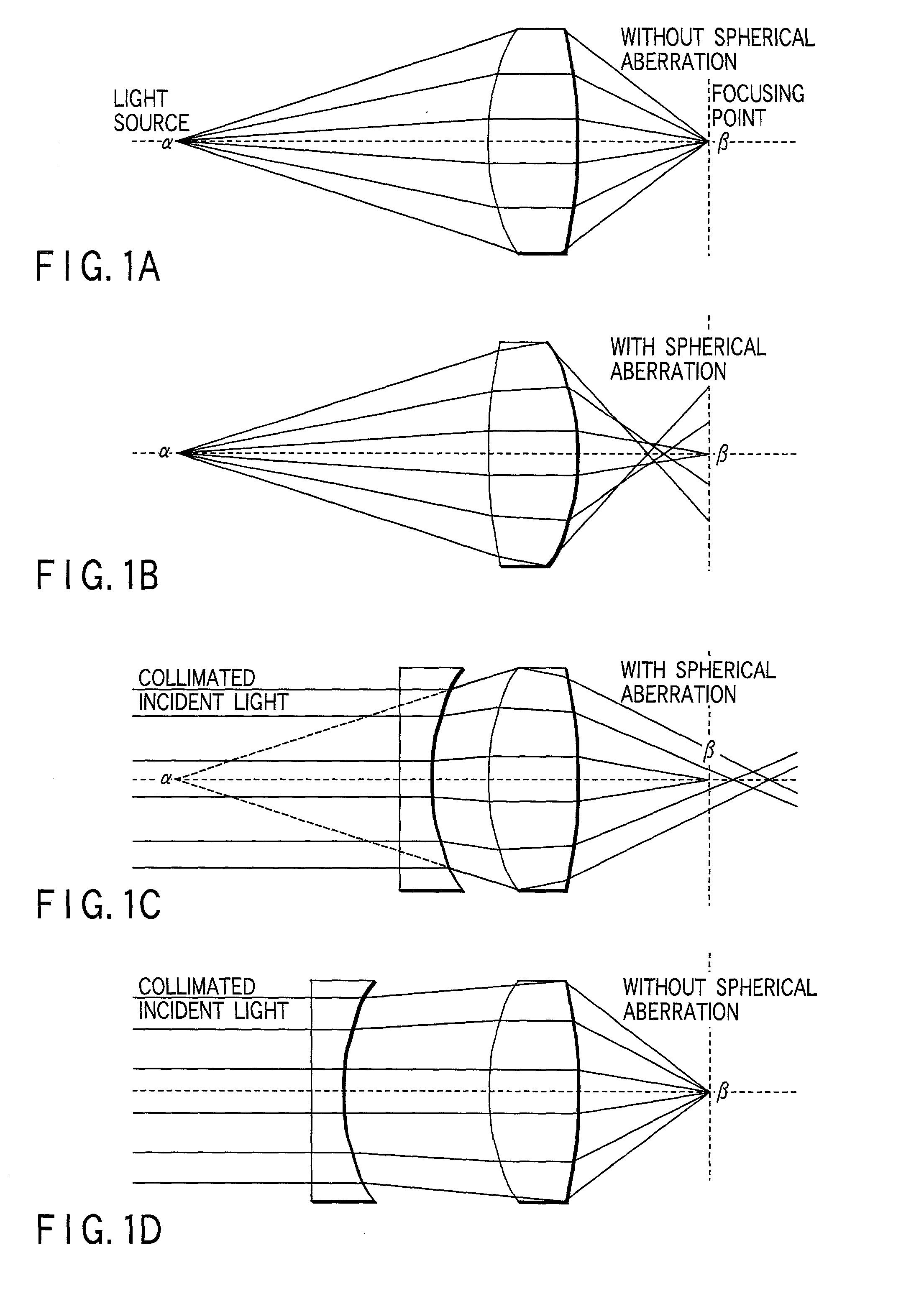Optical information processing system using optical aberrations and information medium having recording layer protected by transparent layer having thickness irregularity
a technology of optical aberration and information medium, which is applied in the direction of recording signal processing, digital signal error detection/correction, instruments, etc., can solve the problems of inability to use single-lens structure, inability to use the same manufacturing method (quality control method) as that for an information medium used for a conventional dvd, and inability to use mechanical measurement methods for measuring and managing. , to achieve the effect of reducing the influence of the positional shift and reducing the influence of the main beam
- Summary
- Abstract
- Description
- Claims
- Application Information
AI Technical Summary
Benefits of technology
Problems solved by technology
Method used
Image
Examples
Embodiment Construction
[0287]An information playback apparatus (read-only optical disk drive or optical disk player) for playing back information recorded on an information medium (optical disk) by using focused light (laser beam) or an information recording / playback apparatus (readable / writable optical disk driver or optical disk recorder) for recording / playing back information on / from an information medium generally has, for example, the following functions:
[0288](a) the focus correction function (focusing servo) of matching a reflecting or recording layer position of an information medium to the focusing point position of focused light;
[0289](b) the track deviation correction function (tracking servo) of making focused light trace tracks concentrically or spirally (helically) formed on the reflecting or recording layer of an information medium; and
[0290](c) the tilt correction function (tilt servo) of making correction for the tilt of the reflecting or recording layer of an information medium which is ...
PUM
| Property | Measurement | Unit |
|---|---|---|
| thick | aaaaa | aaaaa |
| thickness | aaaaa | aaaaa |
| thickness | aaaaa | aaaaa |
Abstract
Description
Claims
Application Information
 Login to View More
Login to View More - R&D
- Intellectual Property
- Life Sciences
- Materials
- Tech Scout
- Unparalleled Data Quality
- Higher Quality Content
- 60% Fewer Hallucinations
Browse by: Latest US Patents, China's latest patents, Technical Efficacy Thesaurus, Application Domain, Technology Topic, Popular Technical Reports.
© 2025 PatSnap. All rights reserved.Legal|Privacy policy|Modern Slavery Act Transparency Statement|Sitemap|About US| Contact US: help@patsnap.com



